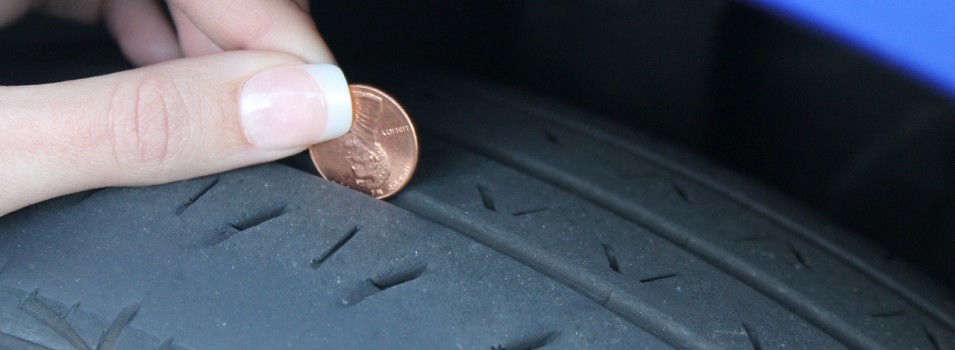
What Your Customers Need To Know: Percentage of Tire Tread Depth
No matter what time of the year it is, there’s always the possibility of inclement weather. If you get behind the wheel of a vehicle any time during rain or snow, you will be faced with driving hazards.
Depending on your driving speed and the road conditions, stopping on wet roads can take up to four times the normal force required to come to a halt. And if your tires are worn… you risk the chance of hydroplaning or skimming over the surface of the road with little or no grip.
Sadly, there are many people using the road while driving on worn tires.
You don’t want to join that vast majority of drivers who truly do not understand the dangers of driving on low tread tires.
Distressed tires, particularly bald ones can be fatal on wet roads, where the grooves are not deep enough to channel water out from beneath the treads.
The end-result is hydroplaning, where the tread wears and forces the tire to skim the water’s surface and the vehicle reacts to the steering wheel.
Snow grip and wet weather braking add additional wear bare tires.
Tread Depth
Tread depth is a perpendicular measurement between the very top of the tread rubber to the base of the deepest grooves of the tire.
In the US, tread depth is quantified in 32nds of an inch. You can calculate your tire’s tread depth by using a depth gauge.
Typical new tires usually begin with 10/32″ to 11/32″ of first tread depth.
Winter/snow tires and light truck tires usually are deeper. For light truck tires, that depth depends on the tire’s tread kind, varying from Highway Rib, Highway All-Season, Off-Road Maximum Traction or Off Road All Terrain.
Tires are lawfully “worn out” in the majority of States when they reach 2/32″ of remaining tread depth. By way of example, a typical tire that begins with 10/32″ of original tread depth has only 8/32″ of usable tread depth.
Manufacturing companies have set a number of horizontal bars at the bottom of the grooves to make bald tires easier for owners to see.
The bars become flush when the depth of the groove gets to 2/32 of an inch.
Since tire tread provides grip to prevent a vehicle from slipping and skidding, a tire is bad and ought to be replaced when the tread is worn down to 1/16th of an inch.
Not only is it incredibly important for your driving safety to make sure that your tires have good treads, but it is also essential to be sure your tires are correctly inflated.
If all of this seems like too much to handle, then may want to consider getting a tire inventory management to assist you in checking up on your tires. It cannot be stressed enough. If you drive on tires that are bald or significantly under-inflated, you’re risking an injury to yourself, your passengers, and other motorists on the road.
